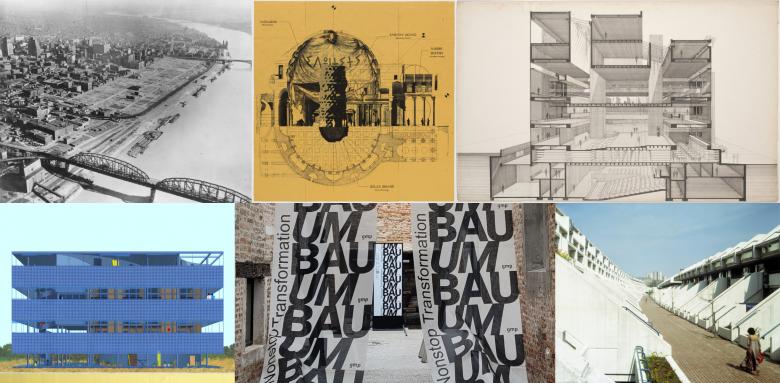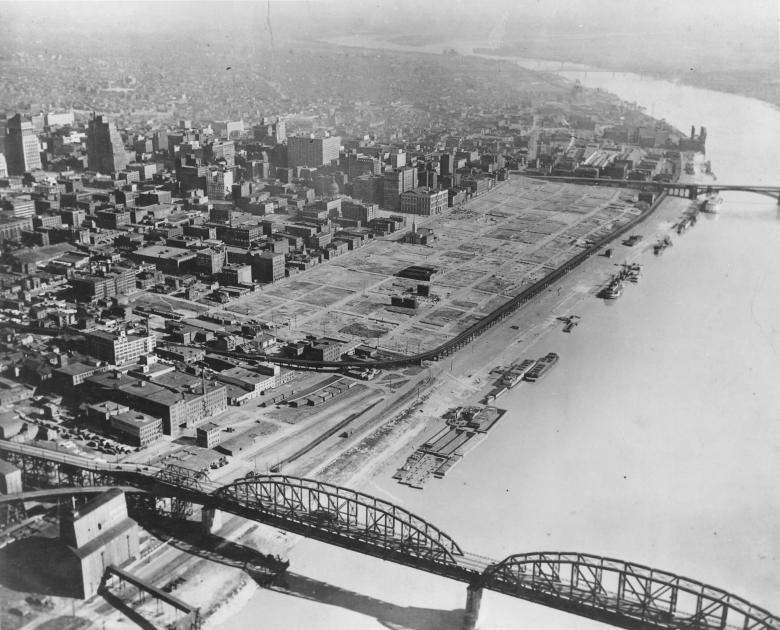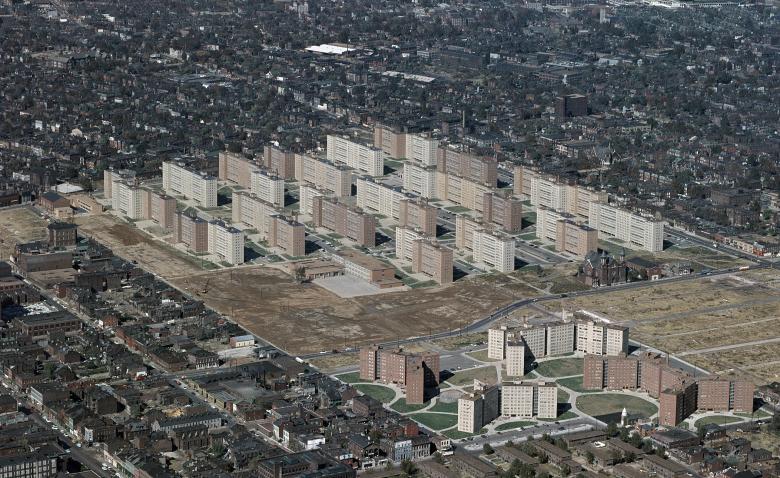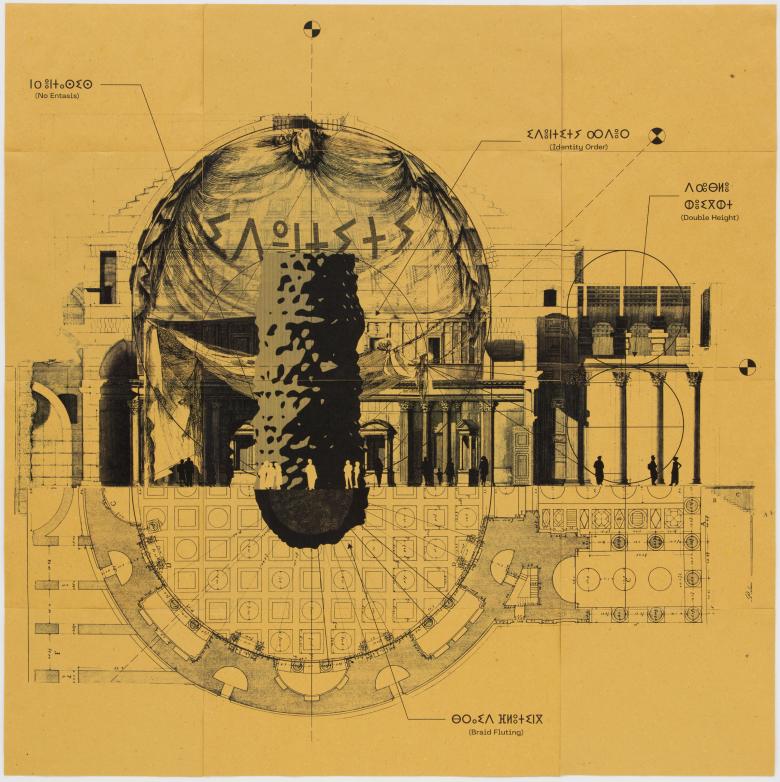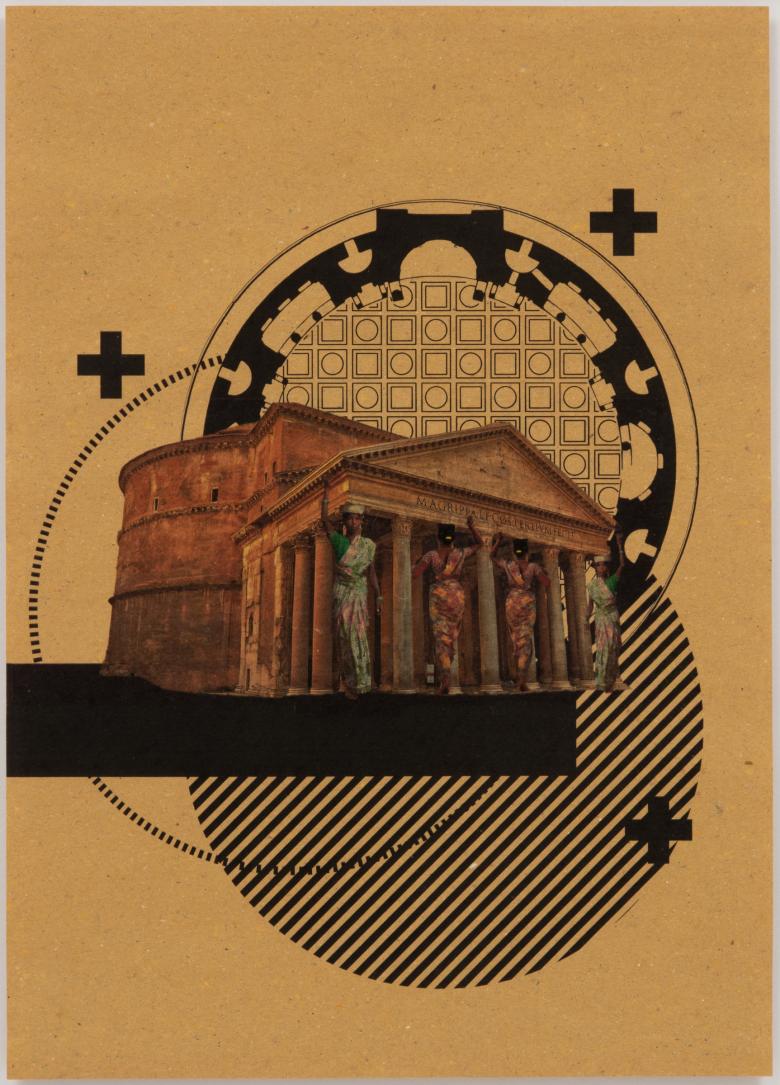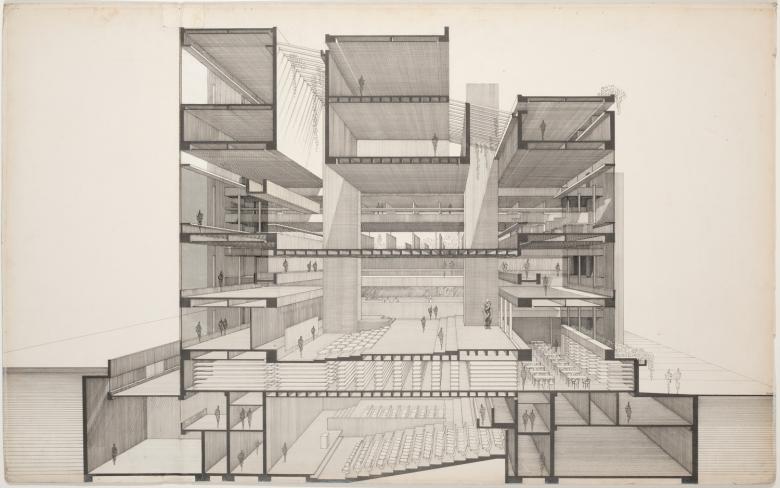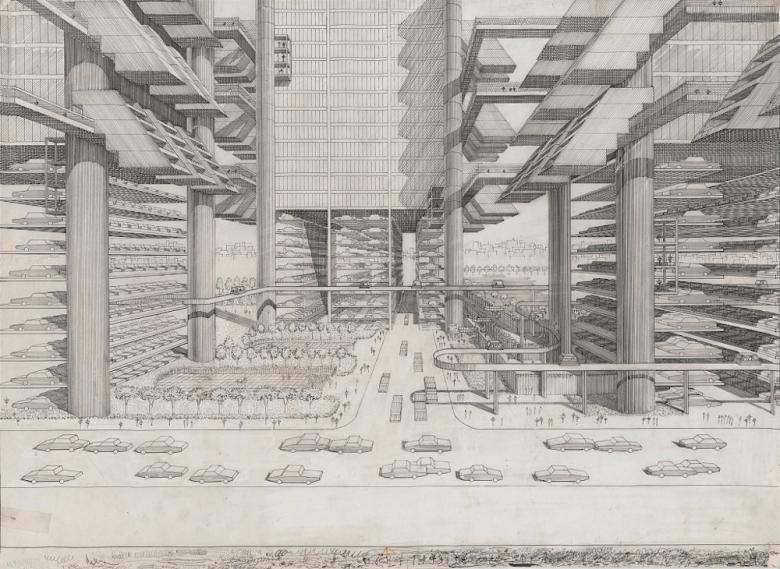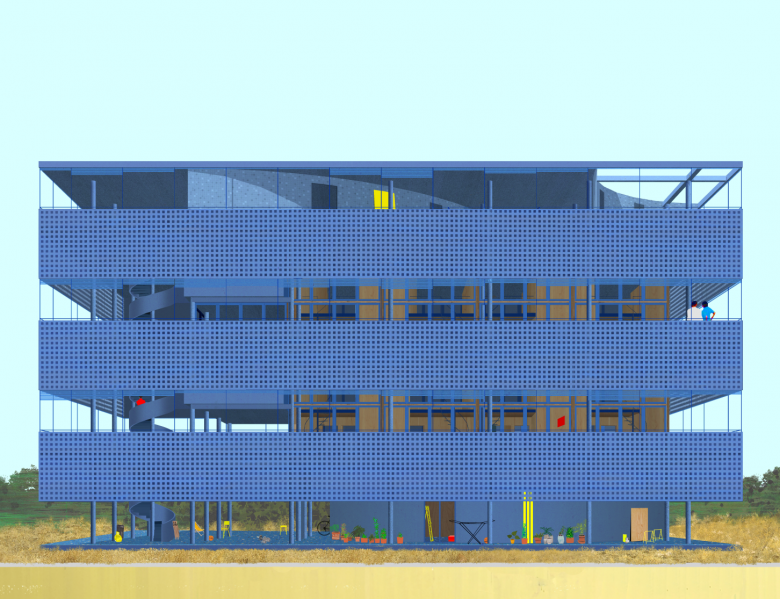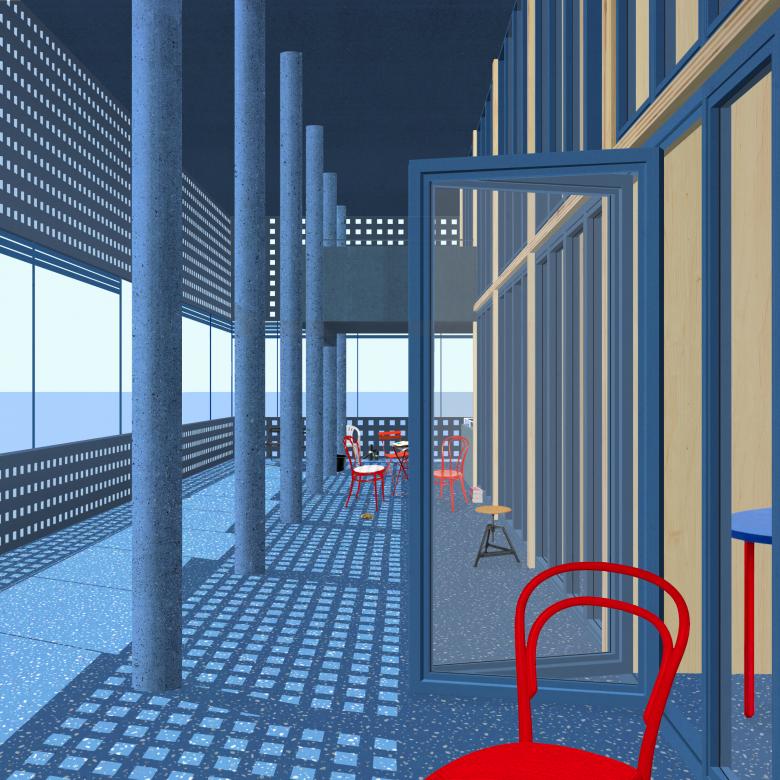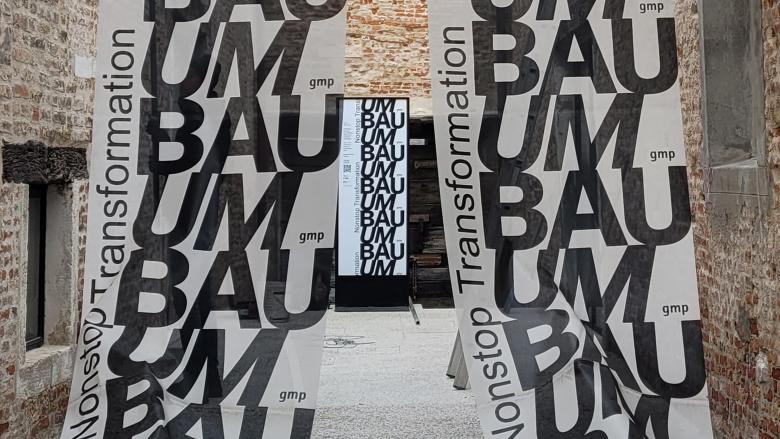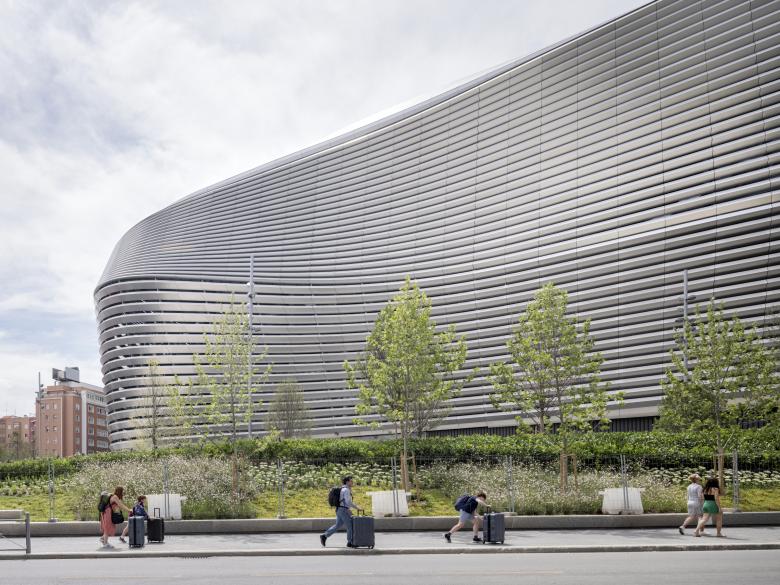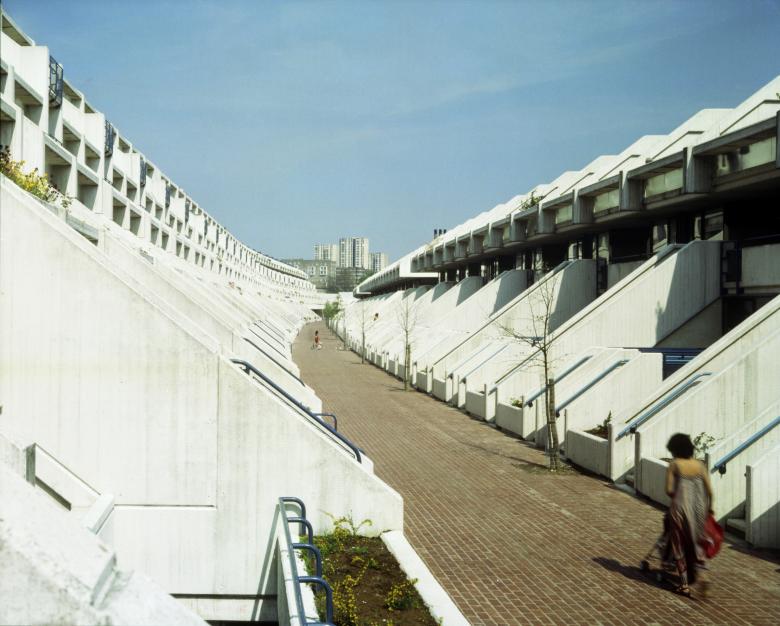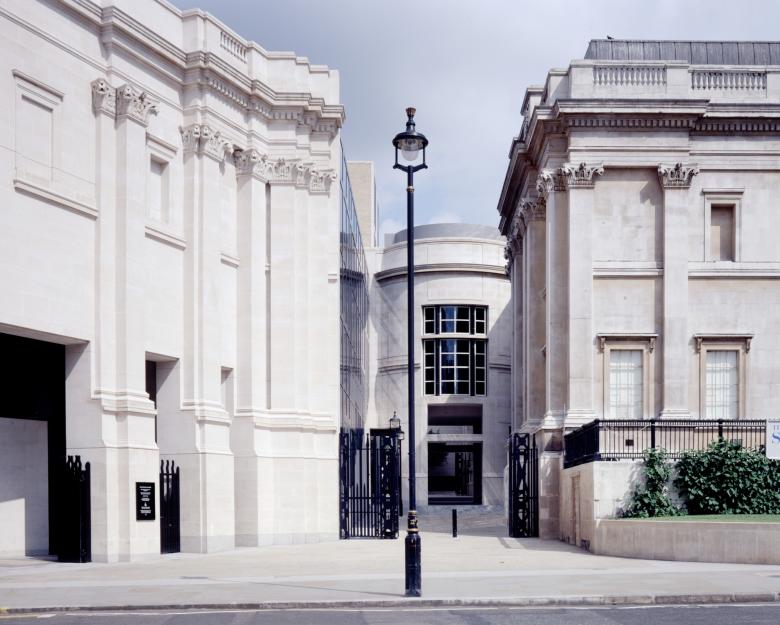Unlike fashion, publishing, and other fields, architecture doesn't have a “season.” But when it comes to exhibitions and other architectural events, autumn is a busy time. Here we highlight a half-dozen of the numerous architecture exhibitions opening in September and October. These are monographic exhibitions but also explorations of site and place — all of which we're looking forward to.
Design Agendas: Modern Architecture in St. Louis, 1930s–1970s
Design Agendas: Modern Architecture in St. Louis, 1930s–1970s
September 13, 2024 – January 6, 2025
Mildred Lane Kemper Art Museum, St. Louis
Think of St. Louis architecture in the middle of the 20th century and most likely two projects come to mind, one famous and one infamous: The Gateway Arch by Eero Saarinen (1947–48 competition; 1967 inauguration) and the Pruitt–Igoe public housing project by Minoru Yamasaki (1954 opening; 1972–76 demolition), respectively. Although they are dramatically different structures — one is a minimal monument, the other was made up of 33 housing blocks — they both involved the widespread clearance of “slums” that many cities, not just St. Louis, were embracing at the time.
These and other projects in the Midwestern city that embody the era's de facto racial segregation are explored in Design Agendas: Modern Architecture in St. Louis, 1930s–1970s, which opens at Washington University's Kemper Lane Art Museum on September 13. The exhibition is curated by Eric P. Mumford and will be accompanied by a scholarly publication, edited by Mumford, that “will serve as one of a small but growing number of reference works on modern architecture in St. Louis.”
Excerpted description from Kemper Art Museum:
“Design Agendas: Modern Architecture in St. Louis, 1930s–1970s is the first major exhibition to examine the complex connections in St. Louis among modern architecture, urban renewal, and racial and spatial change in the interlocking histories of New Deal planning, the Great Migration, and the civil rights and Great Society eras. With material drawn from the Saint Louis Art Museum, the Missouri Historical Society, and other collections, this exhibition situates some of the most celebrated works of modern architecture in St. Louis within the context of mid-twentieth-century regional developments. Using architectural drawings, models, photographs, films, digital maps, and artworks, Design Agendas explores a remarkably destructive, creative, dynamic, and conflicted time in St. Louis’s architectural and urban history.”
Germane Barnes: Columnar Disorder
Germane Barnes: Columnar Disorder
September 21, 2024 – January 27, 2025
The Art Institute of Chicago
The work of Germane Barnes, the Chicago-born and Miami-based architect and educator, came to the attention of many people via two exhibitions: Reconstructions: Architecture and Blackness in America, which opened at the Museum of Modern Art in February 2021, and The Laboratory of the Future, the 2023 Venice Architecture Biennale curated by Lesley Lokko. For the former, his eponymous studio installed A Spectrum of Blackness, which “aim[ed] to mine oral histories of Miami’s most prominent Black ethnicities and […] reconstruct their suppressed narratives”; and for the latter he contributed installed Griot, “which speculates missing legacies prevalent in foundational architectural cannon [sic]” and was highlighted by a black stone column in the middle of the Arsenale building. Barnes extends the thinking in those and other exhibitions/installations with Columnar Disorder, his first solo museum exhibition, curated by curated by Irene Sunwoo and opening at The Art Institute of Chicago on September 21.
Excerpted description from The Art Institute of Chicago:
“For his first solo museum exhibition, Barnes recasts the canonical foundations of Western architecture through the lens of the African diaspora. Critically reflecting on the enduring legacy of the Classical orders—the Doric, Ionic, and Corinthian—whose distinctive columns continue to proliferate in our built environment today, Barnes upends these long-standing and ubiquitous conventions by reimagining architectural orders that are instead rooted in the Black experience, history, and values.
“His project centers on the design of three new columns, which the exhibition presents through drawings, collages, and commissioned sculptural works. The Identity Column celebrates the Black body and beauty, the Labor Column considers how slavery fueled American economic growth, and the Migration Column — a meditation on the intercontinental journeys of enslaved Africans — recognizes water as a site of Black memory, loss, and selfhood.”
Materialized Space: The Architecture of Paul Rudolph
Yale University Library)
Materialized Space: The Architecture of Paul Rudolph
September 30, 2024 – March 16, 2025
The Metropolitan Museum of Art, New York City
Even as the buildings of Paul Rudolph continue to fall, despite the efforts of preservationists and the growing appeal of brutalist architecture, the drawings that he and his office produced for such buildings as the Art and Architecture Building (now Paul Rudolph Hall) and the unbuilt Lower Manhattan Expressway continue to enthrall. Many of these will be on display at Materialized Space: The Architecture of Paul Rudolph, which collects more than 80 artifacts — “from small objects that he collected throughout his life to a mix of material generated from his office, including drawings, models, furniture, material samples, and photographs” — from the Library of Congress’s Paul Marvin Rudolph Archive. The exhibition, organized by The Metropolitan Museum of Art, opens at The Met Fifth Avenue on September 30.
Excerpted description from The Met:
“The Met presents the first-ever major museum exhibition to examine the career of the influential 20th-century architect Paul Rudolph, a second-generation Modernist, who came to prominence during the 1950s and 1960s alongside peers such as Eero Saarinen and I.M. Pei. Materialized Space: The Architecture of Paul Rudolph showcases the full breadth of Rudolph’s important contributions to architecture—from his early experimental houses in Florida to his civic commissions rendered in concrete, and from his utopian visions for urban megastructures and mixed-use skyscrapers to his extraordinary immersive New York interiors. The exhibition gives visitors the opportunity to experience the evolution and diversity of Rudolph’s legacy and better understand how his work continues to inspire ideas of urban renewal and redevelopment in cities across the world.”
Dogma: Urban Villa
Dogma: Urban Villa
October 4, 2024 – February 9, 2025
Flanders Architecture Institute at De Singel, Antwerp
In recent years Dogma, the Belgian studio founded by Pier Vittorio Aureli and Martino Tattara in 2002, “has been working on a research by design trajectory that focuses on domestic space and its potential for transformation.” That research on the evolution of housing has led to such projects as Faux Corbu, which the studio describes as “a reinterpretation of Le Corbusier's project for Villa Baizeau in Carthage (1928–30)” and “a prototype for communal living.” It and other relevant Dogma projects are presented in Urban Villa, opening at the Flanders Architecture Institute (VAi) at De Singel on October 4.
Description from Flanders Architectural Institute:
“Built in many European cities since the 19th century, urban villas are detached, medium-sized residences containing several flats. They were intended to reconcile the expectations of suburban life with rising land costs in the city. The compact and speculative nature of urban villas attracts a diverse range of residents, thereby ensuring their commercial success. In this exhibition, Dogma challenges the urban villa’s market and investment-orientated character and explores its collective potential.
“The exhibition consists of two parts. The first outlines the history of the urban villa as a specific typology; from town houses to multi-family residences in cities such as Lausanne, Berlin and Rome. The second section showcases a series of design proposals by Dogma. Four projects approach the urban villa as a cooperative home, while another presents it as a collective and affordable housing model.”
UMBAU: Nonstop Transformation
UMBAU: Nonstop Transformation
October 10 – November 6, 2024 at Goethe-Institut New York
October 18–26, 2024 at Architektur Galerie Berlin
Typically, a traveling exhibition moves its contents sequentially from one venue to another, but in the case of UMBAU: Nonstop Transformation, which opened in Venice in 2023 and highlights building conversions carried out by gmp · Architects von Gerkan, Marg and Partners, the “exhibition concept for each venue is as unique and dynamic as each conversion project itself.” UMBAU will be held in two venues simultaneously this autumn: In Berlin, where gmp is currently designing a number of conversions, the renovated and remodeled Magdeburg Hypar Shell will be presented. The exhibition opening October 10 at the Goethe-Institut in New York will focus on global challenges relating to building conversions, as in the transformation of high-rise buildings and the conversion of cultural and sports buildings in Europe and Asia.
Exhibition description from gmp:
“UMBAU (conversion) means the continuous transformation of existing structures. Considering today’s climate goals, UMBAU must move from being the exception to becoming the rule. The exhibition contributes to this by discussing projects by the architects von Gerkan, Marg and Partners (gmp) as precise case studies of conversion practices from the 21st century dealing with the architectural heritage of the modern movement. What the projects have in common is a conceptual approach to UMBAU, which, starting from a comprehensive inventory of the existing, continues and develops the old as an architectural evolution. Practice shows that UMBAU must also integrate new settings and superimpositions. UMBAU is not unique, but continues into the future as a nonstop transformation, as a collaboration spanning generations.”
Difficult Sites: Architecture Against the Odds
Difficult Sites: Architecture Against the Odds
October 11, 2024 – March 29, 2025
RIBA (Royal Institute of British Architects), London
As architecture and construction pivots from greenfield, tabula rasa sites to brownfields, adaptive reuse, awkward lots and other “difficult sites,” the Royal Institute of British Architects (RIBA) presents a timely look at historical and contemporary precedents relevant to today's challenges. The free exhibition presents twenty UK projects from the 1900s to today, among them Neave Brown's Alexandra Road Estate, Colin St. John Wilson's British Library, Robert Venturi and Denise Scott Brown's Sainsbury Wing at the National Gallery, all in London, as well as Grimshaw Architects' Eden Project in Cornwall and Wilkinson Eyre's Magna Science Adventure Centre in Rotherham. Difficult Site opens at RIBA's London home on October 11.
“Our latest free exhibition explores remarkable feats of architectural achievement in the face of tricky terrain, awkward urban plots, challenging remodels, and more.
“From the 1900s to today, it delves into over twenty complex, unusual, and dynamic builds across the UK.
“Including work from history’s most renowned architects Neave Brown, Grimshaw Architects, and Lord Norman Foster as well as contemporary practices of Tonkin Liu, KnoxBhavan, and Carmody Groarke the exhibition highlights the pioneering spirit at the heart of great architecture.
“Through original drawings, photography, models, and plans it offers an eye-opening look at how resilient and creative practitioners are in realizing the inconceivable against the odds.”
